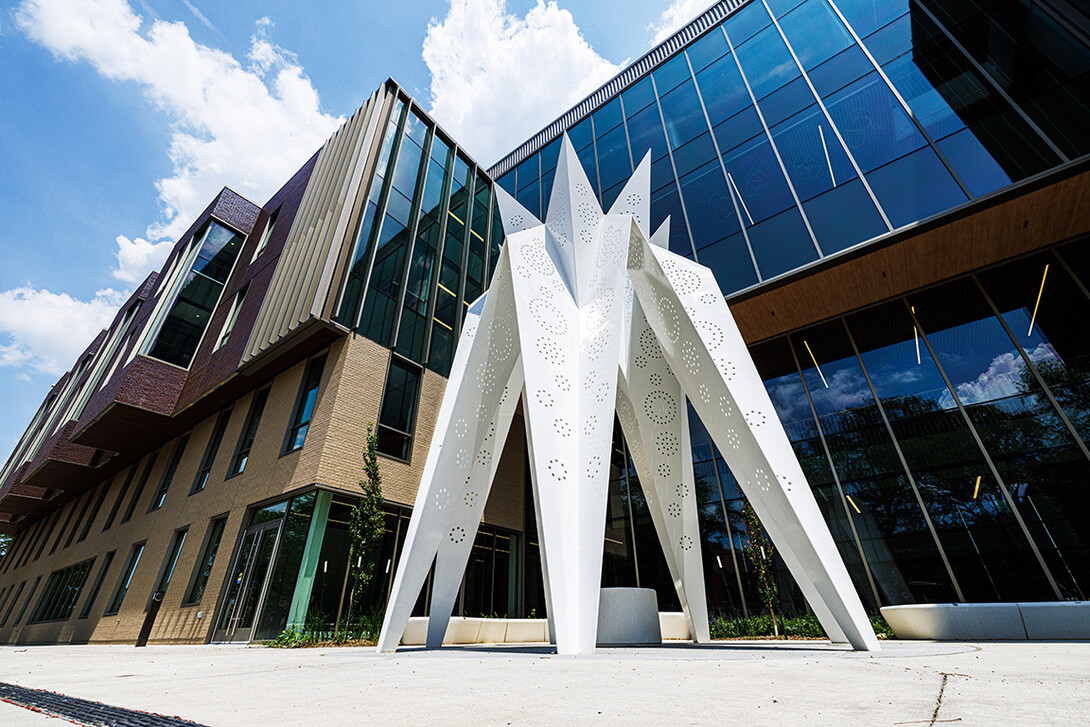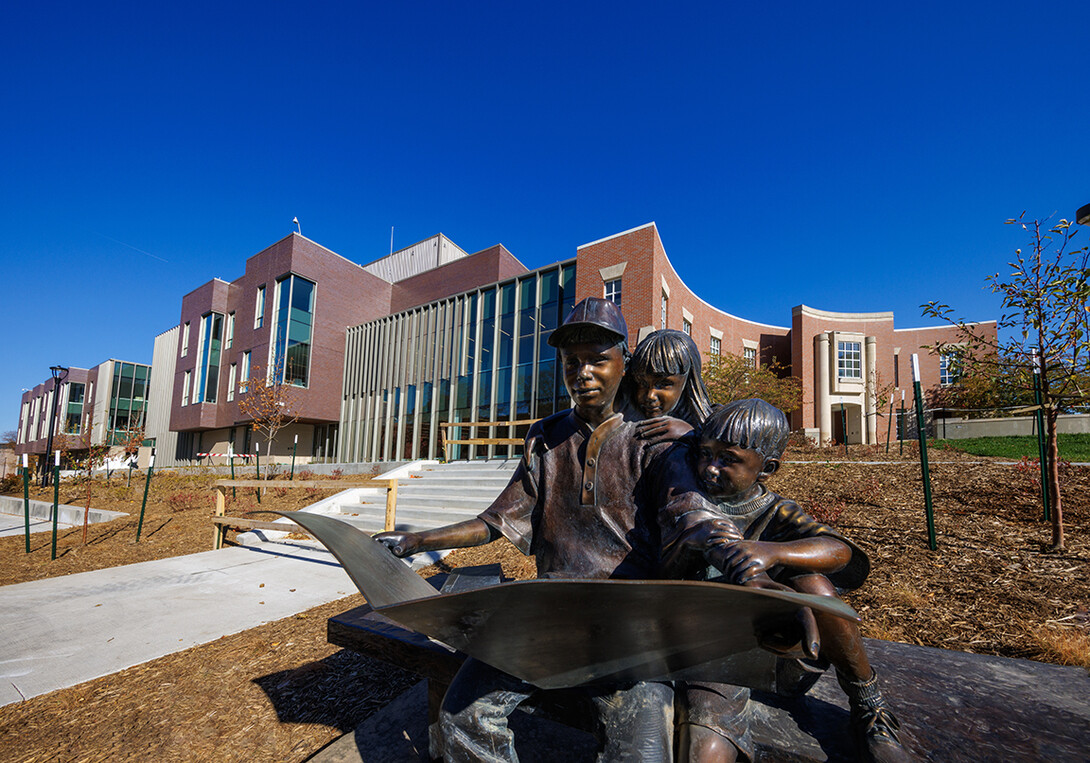
Standing 20 feet tall outside of Carolyn Pope Edwards Hall is the latest addition to the University of Nebraska–Lincoln’s outdoor sculptural collection, but this sculpture is distinctly tied to the College of Education and Human Sciences.
The 20-foot tall piece, titled “T.I.E.” was created by James Dinh of Los Angeles. The name stands for transformation, illumination and effort.
Landscape architect-artist Dinh was chosen by a committee led by Marjorie Kostelnik, professor and dean emerita of the college, and comprised of faculty, staff, students and representatives of the Nebraska Arts Council. The process for selecting artists to create both indoor and outdoor pieces for Edwards Hall began in March 2021.
“We had more than 100 artists submit their work for consideration,” Kostelnik said. “We had a theme for the building — making learning visible — that committee could see that theme in James’ work.”
Following interviews with finalists, Dinh’s concept was chosen, and the physical creation of the sculpture started in March 2022.
“The fabrication of the sculpture was straightforward,” Dinh said. “The installation and putting together the seven separate pieces of the sculpture proved to be the most challenging aspect of the project.”
Due to its height and width, the sculpture was shipped to Lincoln on flatbed trucks in pieces. Once in Lincoln, construction of the sculpture began and was completed in November 2022.
It was not a simple process, Dinh said. Many worked on assembling and welding the sculpture together. The outcome proved to be worth it.
“I had done an origami-inspired sculpture previously and felt that the concept of folding and transformation was perfect for the UNL project,” Dinh said. “The geometry and white color of the sculpture complements the very clean, contemporary architecture of the building.”
The sculpture also represents a much deeper part of what Carolyn Pope Edwards Hall means to the university, and the mission of the College of Education and Human Sciences.
“I thought about how light is necessary for something to be visible,” Dinh said. “Also, light is a universal symbol for the acquisition and dissemination of knowledge. It was therefore important to me to incorporate both sunlight and night-time illumination into the artwork.”
Along the entire sculpture there are apertures in circular patterns. The patterns create and project shadows around the sculpture. These shadows are ever-changing — moving throughout the day, depending on the sun. At night, artificial light is used, allowing the sculpture to be a continuous source of light and connectivity on campus.
“Importantly, I wanted the sculpture to be interactive, so that people could actually enter the sculpture and sit within it,” Dinh said. “I hope students, staff and visitors come to identify the sculpture with the College of Education and come to use it as a place to meet and rest.”

Kostelnik said the sculpture has become integral to the building and complements nicely with “The Classics,” a sculpture depicting children reading, which was erected when the Teacher’s College was built.
“It’s aesthetically pleasing, it makes a visual statement in the daytime and the evening, and it is it fits well with the building,” she said. “Our hope was to have a sculpture that could be interpreted by the viewer, on their own terms.”







